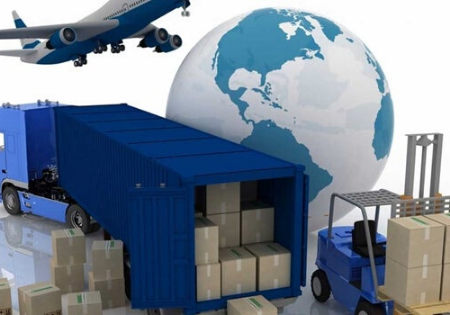
Changes in consumer demands, the rise of e-commerce and fierce market competition have enabled a rapid transformation of the industry
It has been a historic decade for the global logistics industry. The market has grown tremendously over the years and there have been significant improvements in logistics infrastructure worldwide; thanks to digitization and groundbreaking solutions in supply chain and logistics.
Technological advancements have strengthened the capabilities and functioning of every element of logistics, right from packaging and labeling to shipment, transportation and last-mile delivery. Changes in consumer demands, the rise of e-commerce and fierce market competition have also enabled a rapid transformation of the industry.
The era of smarter and faster logistics has just begun. The industry is poised for massive growth and is expected to reach $12,256 billion by 2022. Today, efficient logistics is not just an added advantage for companies, but a key differentiator and growth enabler in the supply chain. As we enter the new decade, we will see a number of trends that will shape the future of logistics in 2020 and beyond.
Artificial Intelligence
Artificial intelligence (AI) is bringing about a revolution in the way packages move around the world. Many businesses have started implementing AI in their logistics operations to improve speed, enhance supply chain productivity and curb operating costs. In 2020, and the coming years, AI will continue to redefine the world of logistics with innovative offerings such as machine learning algorithms, advanced geocoding abilities, route optimization, demand prediction, warehouse automation and more.
Real-Time Visibility in Supply Chain
Supply chains are multilayered and traditional logistics have a number of blind spots. As cross-border trades increase and online selling continues to grow, old-school logistics systems are not enough to keep a track of goods as they move within the supply chain. Technology is eliminating these blind spots by bringing transparency and visibility at every stage of the supply chain, right from the point of manufacture to warehousing, transportation and delivery.
More and more businesses are now realizing the need to adopt smart tech in order to track the movement of goods. Real-time freight tracking software, active tracking devices, sensors and location-based intelligence will dominate the logistics industry in the near future, enhancing supply chain visibility and improving customer experiences phenomenally.
Supply Chain Digital Twin
The concept of a digital twin has been around for some time now. Typically, a digital twin is a virtual replica of a real-world business process, model or function. In today’s dynamic and highly competitive supply chain landscape, network optimization is the way to go.
With the help of a digital twin, enterprises in the supply chain can plan delivery routes and networks efficiently, prepare for problems before they even occur, speed up operations, and even plan activities for the future. In the coming years, digital twin technology will play a major role in modeling new-age supply chains and streamlining logistics operations effectively with maximum accuracy and minimum wastage.
3PL Collaboration
If supply chains were not complex enough, the era of express deliveries is here to make it more complex. More than 40 per cent of shipments are same-day deliveries today compared with less than 5 per cent four years back. Convenience is the new king and the demand for time-defined deliveries and tracking shipments is pushing supply chain enterprises to partner with 3PL service providers and tech start-ups for efficient warehousing, packaging, shipping and last-mile distribution.
Green Logistics
Traditional logistics systems contribute majorly to carbon emissions and the disposal of toxic and hazardous waste materials. Modern supply chain enterprises must adopt environmentally responsible and sustainable processes to help minimize the ecological impact of traditional logistics operations. In the coming years, companies worldwide will adopt green logistics.
Some green logistics initiatives that are already being implemented by supply chain businesses are sourcing from environmentally responsible partners, reducing energy consumption in transportation, reusing and recycling durable packaging materials.
Digitization and technology advancements will continue to redefine the supply chain and logistics landscape in 2020 and the years to come, streamlining every activity and transforming the way goods travel worldwide.
Source: Entrepreneur
